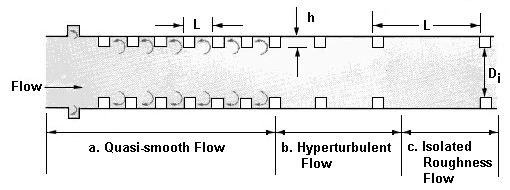HY8:Increased Resistance in Box Culverts: Difference between revisions
From XMS Wiki
Jump to navigationJump to search
No edit summary |
|||
| Line 1: | Line 1: | ||
The input variables required for this calculation are the following: | The input variables required for this calculation are the following: | ||
* h/r<sub>i</sub> | * h/r<sub>i</sub>—Ratio of roughness element height divided by hydraulic radius taken about the top of the roughness element. | ||
* Height of the roughened section (h) | * Height of the roughened section (h) | ||
| Line 11: | Line 11: | ||
Variables from the figure | Variables from the figure | ||
* L | * L—Length from beginning of one roughness element to the beginning of the next roughness element. | ||
* h | * h—height of roughness element | ||
* D<sub>i</sub> | * D<sub>i</sub>—diameter of roughened section (opening) | ||
{{HY8Main}} | {{HY8Main}} | ||
Revision as of 17:38, 29 April 2013
The input variables required for this calculation are the following:
- h/ri—Ratio of roughness element height divided by hydraulic radius taken about the top of the roughness element.
- Height of the roughened section (h)
The following figure shows the flow regimes and variables for an increased resistance energy dissipator implemented in a circular culvert.
Variables from the figure
- L—Length from beginning of one roughness element to the beginning of the next roughness element.
- h—height of roughness element
- Di—diameter of roughened section (opening)
